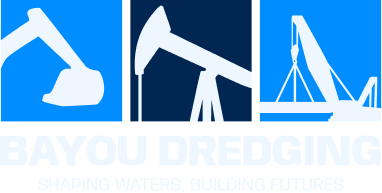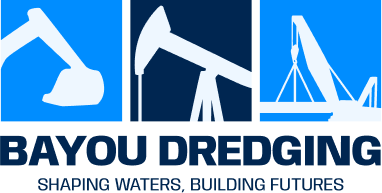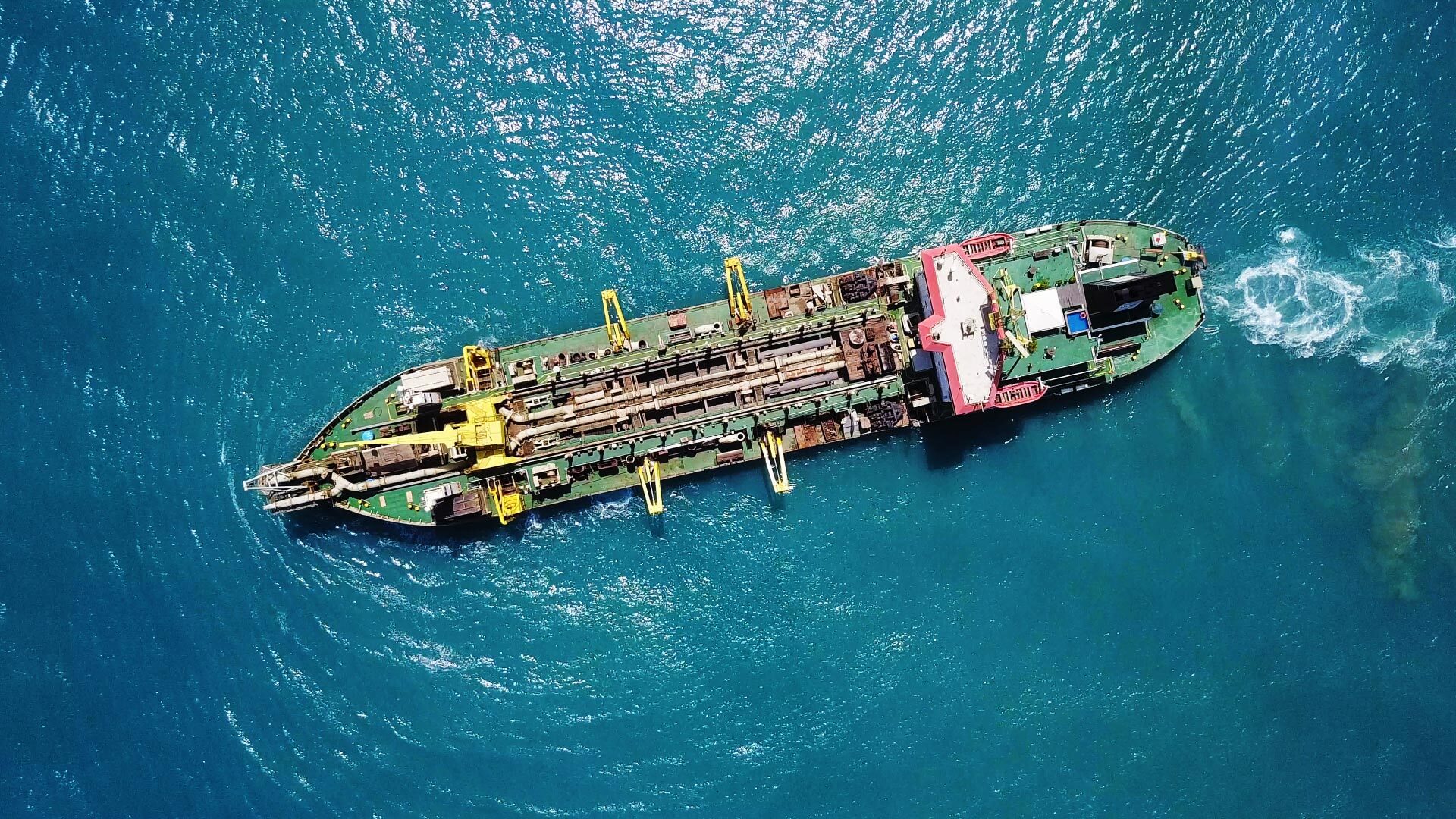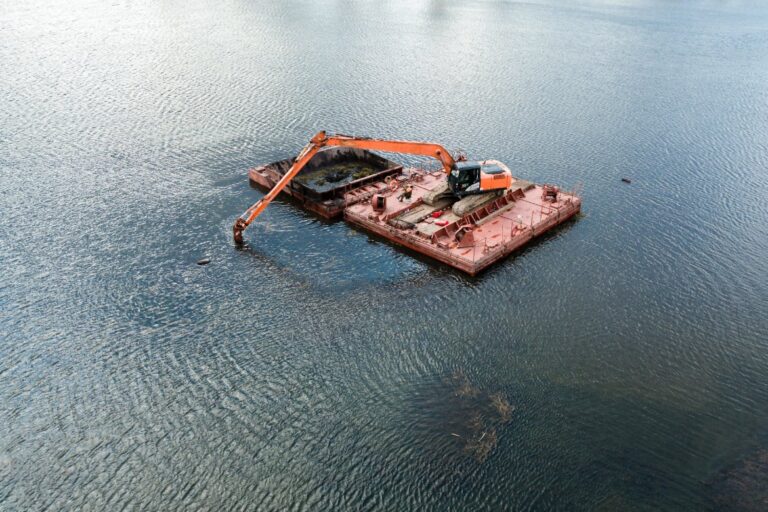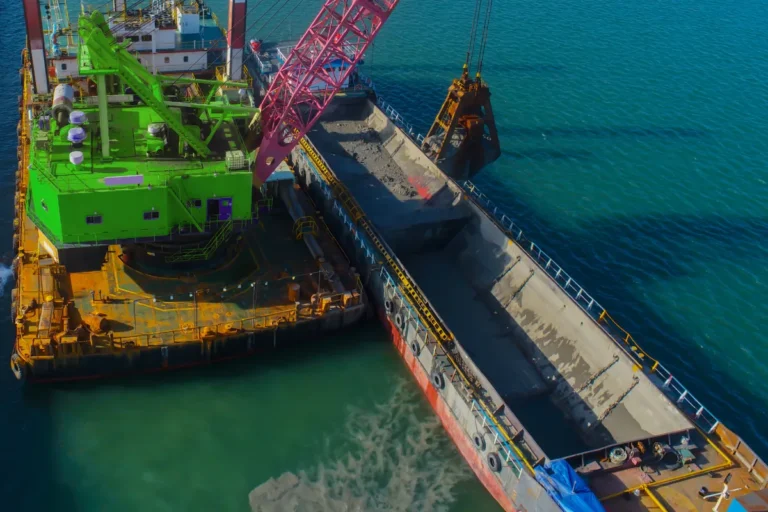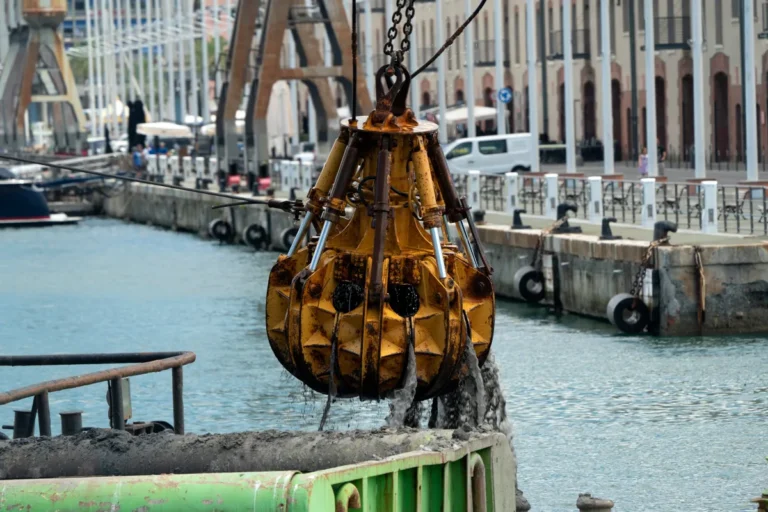Dredging is vital in marine construction, environmental restoration, and industrial applications. It ensures that waterways remain navigable, ecosystems are protected, and infrastructure projects can proceed efficiently. From deepening ports and harbors to restoring shorelines and removing contaminated sediments, dredging is essential for maintaining the health and functionality of aquatic environments.
Dredging contractors are at the forefront of these operations, bringing the expertise, equipment, and technical knowledge required to execute complex dredging projects. Whether working on large-scale port expansions, environmental cleanup efforts, or industrial site maintenance, these specialists handle sediment removal, channel deepening, and land reclamation with precision and efficiency. Their ability to manage projects in diverse environments, from coastal zones to inland waterways, makes them indispensable to both public and private sector developments.
For businesses, municipalities, and industrial operations looking for reliable dredging solutions, searching for dredging contractors near me can help connect them with experienced professionals who understand the unique challenges of their local waterways. Whether it’s removing accumulated silt from reservoirs, restoring eroded shorelines, or maintaining marina depths, a skilled dredging contractor ensures compliance with environmental regulations while maximizing operational efficiency.
In this article, we’ll explore the key challenges faced by dredging contractors and the innovative solutions they use to overcome them. We’ll also provide insights into how the industry continues to evolve in response to environmental, technological, and regulatory demands.
Environmental Regulations and Compliance

One of the most significant challenges dredging contractors face is navigating stringent environmental regulations that govern dredging activities. These regulations are designed to protect marine ecosystems, prevent water contamination, and ensure sustainable sediment management. However, compliance can be complex, requiring extensive permitting, environmental impact assessments, and adherence to strict disposal guidelines.
Securing the necessary permits is often a time-consuming process, as regulatory agencies carefully evaluate potential environmental risks before approving. Dredging contractors must demonstrate that their projects will not disrupt aquatic habitats, harm protected species, or degrade water quality. Additionally, sediment disposal regulations add another layer of complexity, with strict requirements for handling and relocating dredged material, especially if it contains contaminants.
To overcome these challenges, experienced dredging contractors near me work closely with regulatory bodies, ensuring full compliance with local, state, and federal laws. By staying informed about evolving regulations and maintaining open communication with environmental agencies, they streamline the permitting process and minimize project delays.
Incorporating eco-friendly dredging techniques is another critical strategy for regulatory compliance. Precision dredging methods help minimize sediment disturbance, while technologies such as silt curtains prevent the spread of suspended particles, protecting water quality. Additionally, modern dredging equipment is designed to reduce turbidity and environmental impact, ensuring that operations remain within regulatory thresholds. By utilizing advanced tools and sustainable practices, a professional dredging contractor can successfully balance project objectives with environmental responsibility.
Equipment Selection and Maintenance

Selecting the right dredging equipment is critical for the success of any project, yet it remains one of the biggest challenges dredging contractors face. Different dredging operations require specialized equipment tailored to site conditions, sediment type, and project scope. Whether it’s a cutter suction dredge for large-scale excavation, a submersible slurry pump for high-viscosity materials, or a backhoe dredger for precision work in confined areas, choosing the wrong equipment can lead to inefficiencies, delays, and increased operational costs.
Beyond selection, maintaining dredging equipment is equally crucial. Dredging’s harsh operating conditions—exposure to abrasive sediments, saltwater corrosion, and extreme workloads—result in frequent wear and tear. Equipment breakdowns can lead to costly downtime, delaying project timelines and increasing expenses. High maintenance costs, coupled with the limited availability of specialized dredging machinery in certain regions, make equipment management a major concern for dredging contractors.
To address these challenges, leading dredging contractors near me partner with top manufacturers to source high-efficiency dredging pumps and cutting-edge technology. Investing in durable, high-performance equipment helps minimize operational disruptions and ensures optimal productivity. Additionally, implementing a strict maintenance schedule and leveraging predictive maintenance technology—such as real-time equipment monitoring and automated diagnostics—reduces the risk of unexpected failures and extends the lifespan of critical dredging assets.
Finding a reliable dredging contractor with access to the right machinery is essential for projects in remote or equipment-scarce locations. Local dredging contractors near me can provide the necessary expertise and equipment, ensuring that projects stay on track without unnecessary delays due to equipment shortages. By focusing on proper equipment selection and proactive maintenance strategies, dredging contractors can enhance efficiency, reduce costs, and maximize project success.
Sediment Management and Disposal
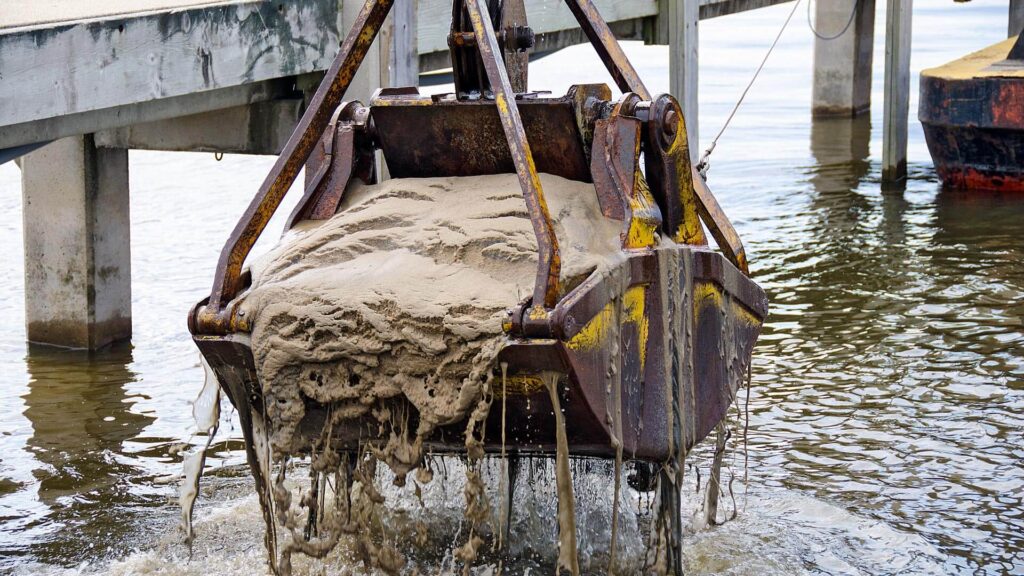
One of the most complex challenges dredging contractors face is the proper management and disposal of dredged material. With increasing environmental regulations and sustainability concerns, handling sediment in an eco-friendly and efficient manner is a top priority. Whether dredging a shipping channel, restoring a wetland, or maintaining an industrial waterway, contractors must carefully plan how to transport, treat, and dispose of or repurpose the excavated material.
Transporting dredged material presents logistical difficulties, especially in projects that require moving large volumes over long distances. Proper site selection for sediment disposal or reuse is crucial, as improper handling can lead to environmental contamination, regulatory fines, and project delays. The challenge becomes even more significant when dealing with contaminated sediments that contain heavy metals, industrial pollutants, or organic contaminants. These materials require specialized treatment and disposal methods to prevent harm to ecosystems and human health.
To overcome these challenges, leading dredging contractors near me implement advanced sediment dewatering and treatment technologies. Techniques such as geotextile dewatering tubes, mechanical dewatering presses, and chemical stabilization allow for the efficient separation of water from solids, reducing disposal costs and environmental impact.
Another key solution is identifying beneficial reuse opportunities. Instead of simply disposing of dredged material, many dredging contractors repurpose sediments for beach nourishment, coastal restoration, wetland creation, and land reclamation. These sustainable practices not only reduce waste but also enhance environmental resilience and economic value.
A well-structured Dredge Material Management Plan (DMMP) is essential for ensuring responsible sediment handling. A professional dredging contractor will develop a comprehensive DMMP that considers factors such as sediment composition, transport logistics, treatment options, and disposal or reuse strategies. By leveraging innovative techniques and strategic planning, dredging contractors can manage dredged material in a way that aligns with environmental regulations and project goals.
Navigational and Site Constraints
Dredging projects often take place in confined and high-traffic areas, such as marinas, ports, and narrow canals, where space limitations and underwater obstacles present significant challenges. Dredging contractors must carefully navigate these environments to remove sediment buildup while minimizing disruptions to surrounding infrastructure and marine traffic. Working around docks, piers, submerged utilities, and other obstructions requires precise execution to prevent accidental damage and ensure smooth operations.
One of the primary concerns in these settings is maintaining navigational safety. Dredging in busy waterways must be coordinated carefully to avoid interfering with commercial and recreational vessel movement. Poorly planned dredging operations can lead to navigational hazards, increased turbidity, and restricted access to critical areas, impacting port operations and local economies.
To overcome these constraints, experienced dredging contractors near me utilize specialized compact dredgers designed for confined spaces. These smaller yet powerful dredging systems allow for efficient sediment removal in hard-to-reach areas without causing excessive disruption. Additionally, advanced sonar and GPS technologies play a crucial role in precision dredging, enabling contractors to map the underwater terrain, identify obstacles, and execute highly accurate dredging operations.
Collaboration with port authorities, maritime agencies, and local stakeholders is another essential strategy for ensuring safe and efficient dredging. A professional dredging contractor will develop a well-coordinated dredging plan that aligns with vessel traffic schedules, regulatory requirements, and site-specific constraints. By integrating innovative technology and strategic coordination, dredging contractors can successfully navigate these challenges while maintaining the functionality of critical waterways.
Workforce and Skill Shortages
The dredging industry relies on highly skilled operators, marine engineers, and technical specialists to execute projects safely and efficiently. However, one of the biggest challenges dredging contractors face is a shortage of experienced personnel. As dredging technologies evolve, the demand for specialized skills continues to grow, making it difficult for contractors to find and retain qualified workers. The aging workforce, combined with a lack of new talent entering the industry, further exacerbates the problem.
Another hurdle is retaining skilled personnel. Dredging projects often require workers to operate in remote locations for extended periods, leading to high turnover rates. Many experienced professionals leave for more stable, land-based opportunities, making it challenging for dredging contractors to build a consistent and reliable workforce. Additionally, as new dredging technologies emerge, continuous training is essential to ensure operators remain proficient in handling modern equipment and automated systems.
To address these workforce challenges, leading dredging contractors near me invest in workforce training programs and industry-recognized certifications. By equipping employees with the latest skills and knowledge, contractors can improve efficiency and reduce operational risks. Many companies partner with trade schools, maritime academies, and vocational training centers to develop the next generation of dredging professionals.
The integration of automation and remote-operated dredging systems is another effective solution. Advanced dredging equipment with remote monitoring capabilities allows fewer operators to manage larger projects with greater precision, reducing the dependency on highly specialized personnel. Additionally, hiring locally and offering competitive wages, benefits, and career advancement opportunities help dredging contractors retain skilled labor and build a reliable workforce for long-term success.
Project Cost and Budget Constraints
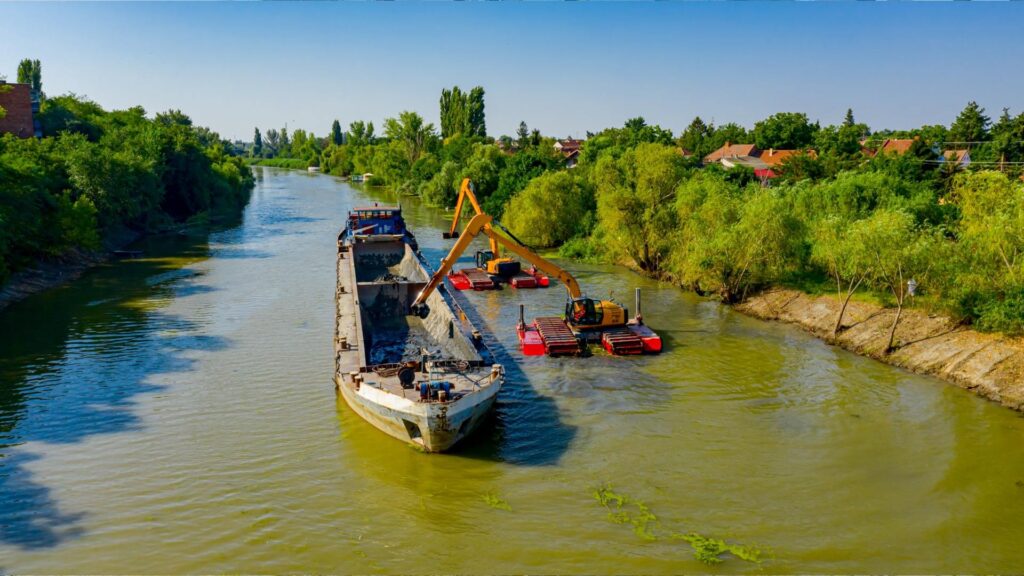
Managing project costs is a constant challenge for dredging contractors, as rising fuel prices, equipment expenses, and labor costs continue to impact operational budgets. The cost-intensive nature of dredging requires careful financial planning to ensure projects remain profitable while meeting regulatory and environmental requirements. Additionally, fluctuations in contract funding and unforeseen project delays can strain budgets, leading to increased expenses and extended timelines.
Fuel is one of the largest operational costs in dredging, especially for large-scale projects requiring heavy-duty dredgers, booster pumps, and support vessels. With fuel prices being highly unpredictable, dredging contractors must find ways to optimize efficiency without compromising performance. Equipment maintenance and replacement costs further add to budget concerns, as outdated or inefficient machinery can lead to higher operational expenses and costly downtime.
To mitigate these financial challenges, many dredging contractors near me focus on implementing cost-effective dredging solutions. Investing in high-efficiency dredging pumps and modern equipment reduces fuel consumption and enhances overall productivity. Advanced technology, such as automated dredging systems and real-time monitoring, helps optimize resource allocation and minimize waste, ultimately lowering project costs.
Thorough project planning and risk assessments are also essential for cost control. By identifying potential delays, regulatory hurdles, and logistical challenges in advance, dredging contractors can develop contingency plans to avoid unexpected expenses. Additionally, public sector projects often require external funding, and seeking government grants or forming strategic partnerships with municipalities and environmental organizations can help offset costs. Working with an experienced dredging contractor ensures that projects are executed efficiently, staying within budget while meeting all performance and compliance standards.
Climate Change and Extreme Weather Conditions
Climate change is significantly impacting dredging operations, presenting new challenges for dredging contractors worldwide. Rising sea levels, shifting sedimentation patterns, and increasingly frequent extreme weather events, such as hurricanes and storms, make it more difficult to maintain navigable waterways, protect coastal infrastructure, and execute long-term dredging projects. These environmental changes increase the demand for dredging while simultaneously making operations more unpredictable and hazardous.
One of the biggest concerns for dredging contractors is the effect of severe weather on project timelines. Hurricanes, heavy rainfall, and strong currents can halt dredging activities, damage equipment, and alter sediment distribution, requiring additional work to restore planned dredging depths. Additionally, unexpected weather events can lead to increased sediment buildup in critical areas, such as ports and shipping channels, disrupting maritime trade and requiring emergency dredging interventions.
To combat these challenges, experienced dredging contractors near me rely on real-time weather monitoring and advanced forecasting systems. By tracking weather conditions and tidal changes, contractors can anticipate disruptions and adjust their dredging schedules accordingly. Flexible project planning ensures that dredging activities can be paused and resumed without significant delays or budget overruns.
Strengthening dredging infrastructure is another crucial strategy. Modern dredging equipment is now designed to withstand harsh weather conditions, with reinforced materials and improved anchoring systems that enhance stability during storms. Additionally, dredging contractors implement proactive measures such as shoreline reinforcement and sediment stabilization techniques to minimize the long-term impact of climate-related erosion and flooding. By integrating technology, strategic planning, and resilient equipment, dredging contractors continue to adapt to the evolving challenges posed by climate change.
Conclusion
Dredging contractors face numerous challenges, from stringent environmental regulations and equipment maintenance to sediment management, workforce shortages, and unpredictable weather conditions. Rising project costs and the need for precision in confined or high-traffic areas add further complexity. However, experienced dredging contractors overcome these obstacles through innovative solutions such as eco-friendly dredging techniques, high-efficiency equipment, predictive maintenance, and advanced navigation technology. Strategic project planning, workforce training, and sustainable sediment disposal methods also play a crucial role in ensuring successful dredging operations while minimizing environmental impact.
As technology continues to evolve, dredging contractors near me are leveraging automation, real-time monitoring, and AI-driven forecasting to improve efficiency, reduce costs, and adapt to changing environmental conditions. Whether it’s maintaining ports, restoring shorelines, or executing large-scale land reclamation projects, working with an experienced dredging contractor ensures safe, compliant, and cost-effective results. If you’re seeking expert dredging solutions tailored to your project’s unique needs, contact a trusted dredging contractor today to discuss your requirements and explore the best approach for your dredging challenges.
